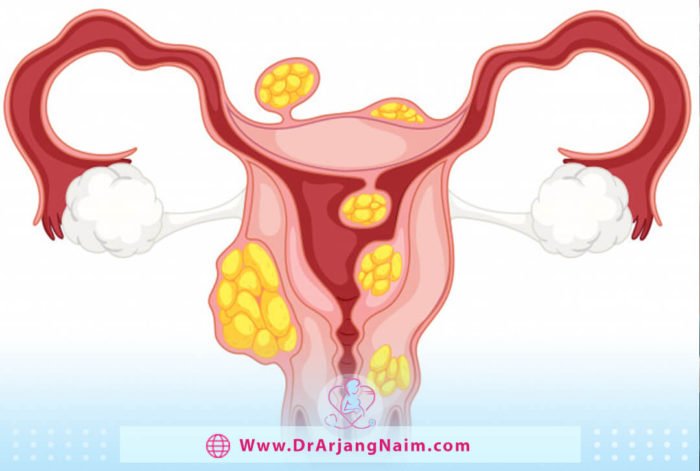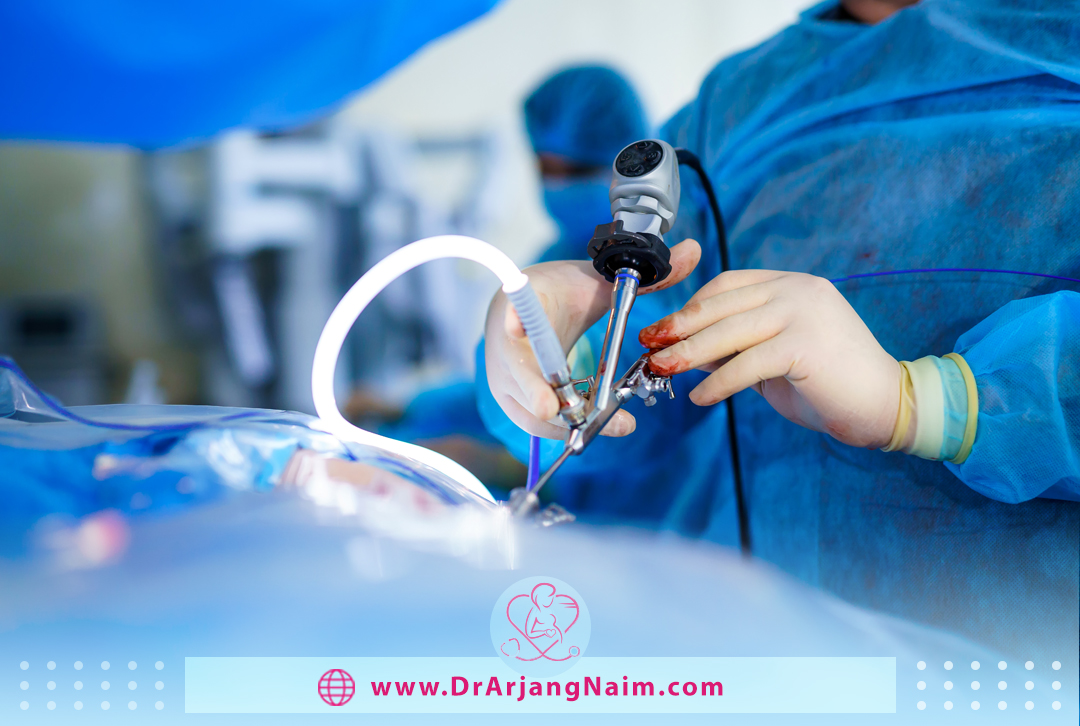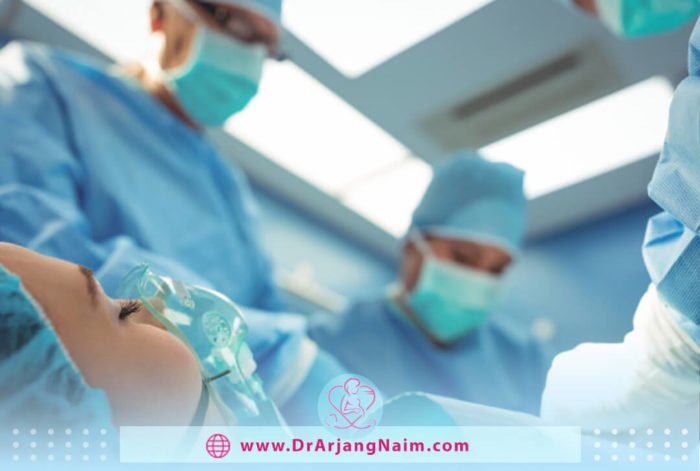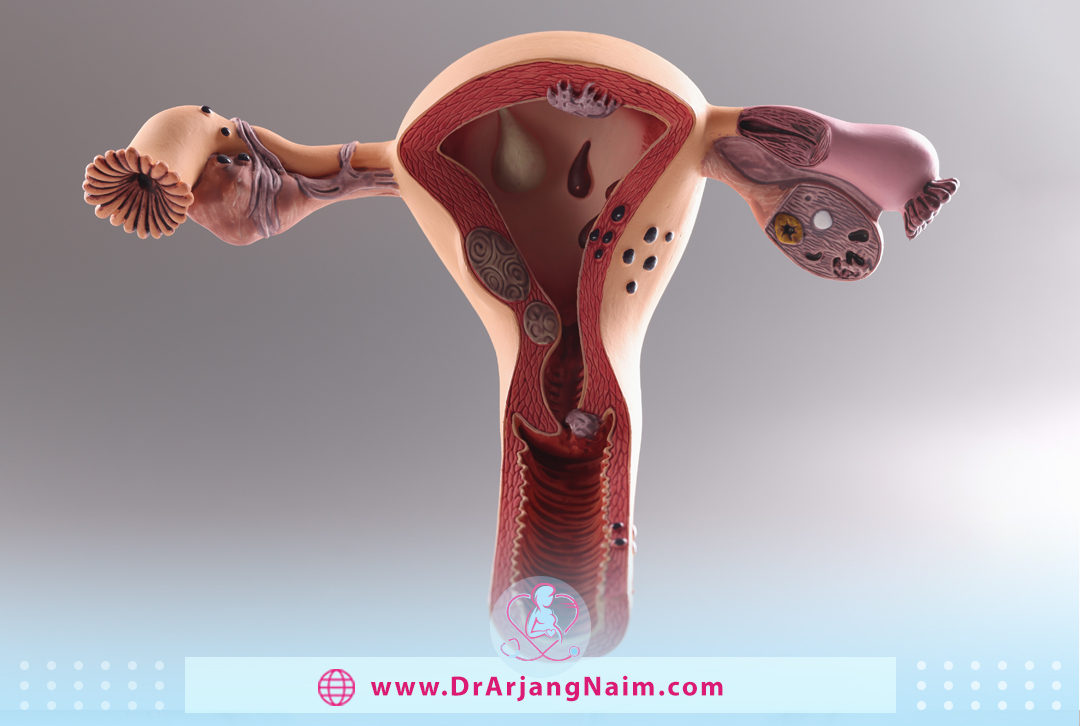What is the management of fibroids?

Management of uterine fibroids services
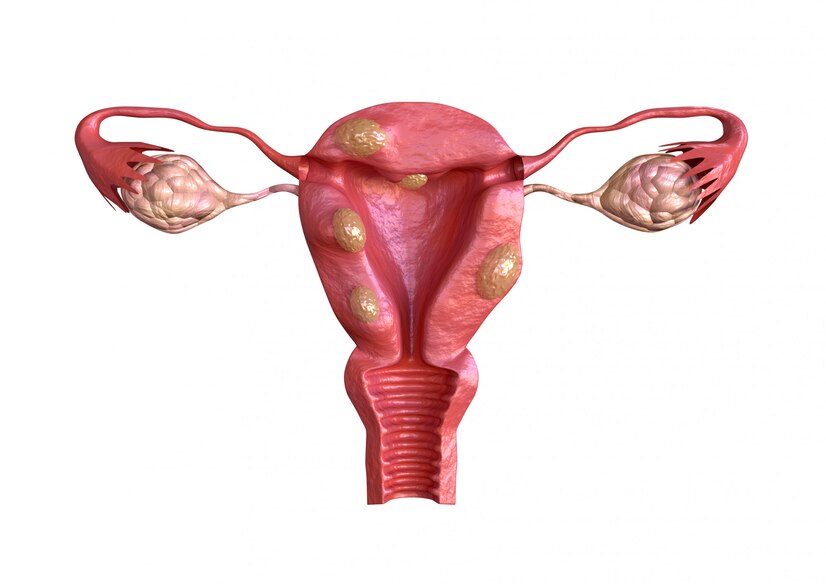
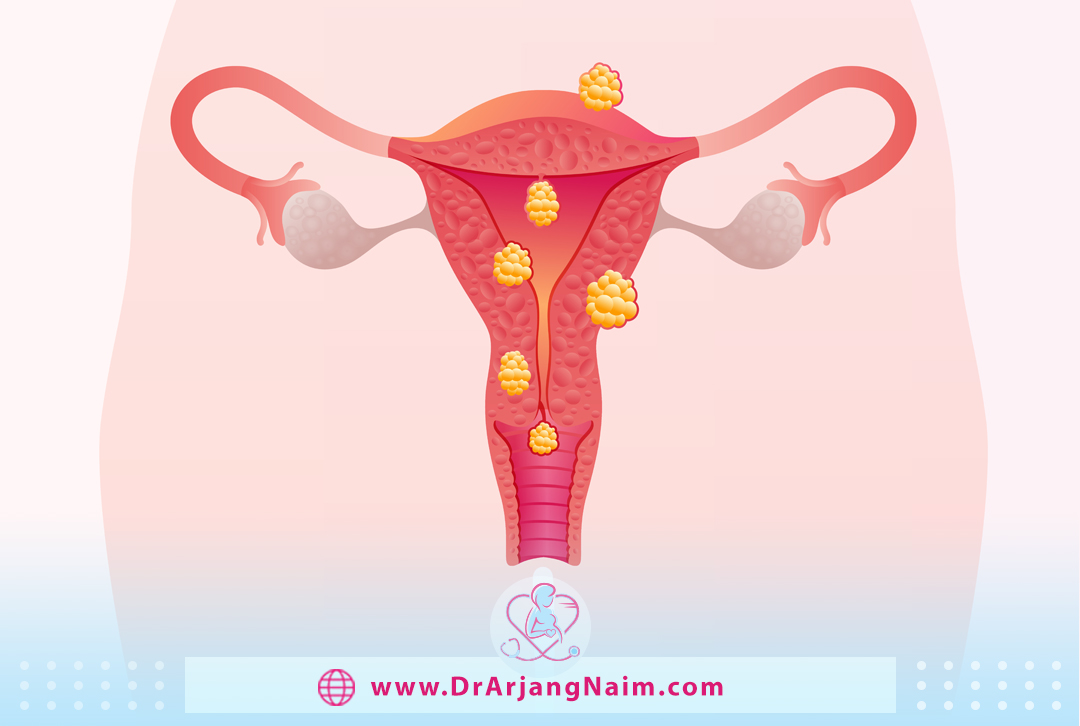
Uterine fibroids
Uterine fibroids are masses of muscle tissue that grow inside the uterus. They can be very small to large in size and shape from melon. The underlying cause of uterine fibroids is unknown, but studies show that hormone fluctuations may play a major role, and having a family history can cause fibroids. Fibroids are more likely to develop during childbearing ages and usually stop after menopause. Although women with fibroids can become pregnant, they must be monitored regularly to ensure that they grow.
Symptoms of uterine fibroids
The most common related symptoms are:
- Irregular menstrual bleeding, including heavy bleeding during periods and spotting and bleeding between periods
- Very painful periods
- Sensations of pressure in the pelvic region
- Painful intercourse
- Frequent urge to urinate
- Urinary incontinence

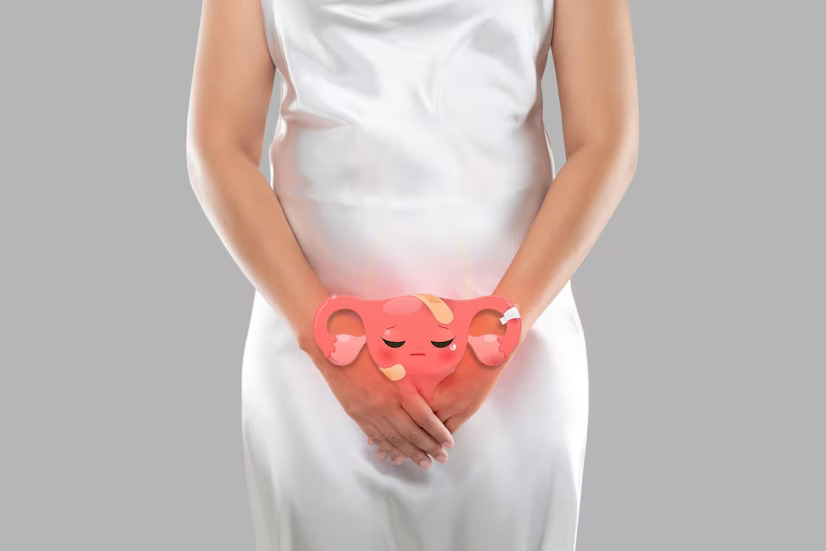
Types of fibroids
There are different types of fibroids. The types differ depending on their location in the uterus or on the uterus. Types of fibroids include:
- Intramural fibroids: Intramural fibroids are the most common type. They appear in the muscular wall of the uterus. Intramural fibroids may enlarge and stretch the uterus.
- Subserosal fibroid: Subserosal fibroid is formed in the outer part of the uterus, which is called serosa. They may become large enough to make the uterus appear larger on one side.
- Pedunculated fibroids: A subserosal fibroid can develop a stalk, a slender base that supports the tumor. When they do, they are known as pedunculated fibroids.
- Submucosal fibroids: These types of tumors develop in the myometrium, the middle muscle layer of the uterus. Submucosal tumors are not as common as other types.
- Cervical fibroids: Cervical fibroids develop on the cervix, which connects the uterus to the vagina. This type of fibroid is rare.

Who is at risk for uterine fibroids?
There are several risk factors that can contribute to the development of fibroids. These can include the following:
- Obesity and a higher body weight
- Family history of fibroids
- Not having children
- Early onset of menstruation
- Late age for menopause
About Dr.Naim
Arjang Naim is an established and highly skilled physician with over 20 years of experience in obstetrics and gynecology.
He is the best ob-gyn in Los Angeles and surrounding communities. He has been practicing medicine since 2001 from two locations in Los Angeles, an office near Beverly Hills and Beverly center, and the other in Hollywood across from children’s hospitals and Hollywood Presbyterian Medical Center.
After obtaining his Bachelor’s degree from UCLA, he spent four years in New York City to study medicine at the prestigious Mount Sinai School of Medicine. His residency in OB/GYN was at Maimonides Medical Center, which happens to be one of the busiest hospitals in New York.
Dr. Naim’s services in Uterine fibroids
The treatment of uterine fibroids can be different depending on the size, number and location of the fibroids as well as the symptoms they cause. If you are not experiencing any symptoms of your fibroids, you may not need treatment. Some people never experience any symptoms or have any problems related to their fibroids. Periodic pelvic examinations and ultrasound are recommended by Dr. Naim depending on the size or symptoms of the fibroid.

If you experience symptoms of fibroids, including anemia due to excessive bleeding, moderate to severe pain, infertility or urinary tract and bowel problems, you need treatment. The recommended treatment plan depends on several factors, including:
- How many fibroids do you have?
- The size of your fibroids
- Where are your fibroids located?
- What symptoms are you experiencing related to the fibroids?
- Your desire for pregnancy
- Your desire for uterine preservation
The best treatment option for you also depends on your future fertility goals. If you want to have children in the future, some treatment options may not be right for you.
Medications
Medicines used include:
- Over-the-counter (OTC) pain medications: These medications can be used to manage discomfort and pain caused by fibroids. OTC medications include acetaminophen and ibuprofen.
- Iron supplements: If you are anemic due to excessive bleeding, iron supplements are recommended.
- Birth control: Birth control can be used to help with the symptoms of fibroids, especially heavy bleeding during and between periods and menstrual cramps.
- Gonadotropin-releasing hormone (GnRH) agonists: These medications can be taken by nasal spray or injection to shrink the fibroids. These medications are temporary and if you stop taking them, the fibroids will grow back.

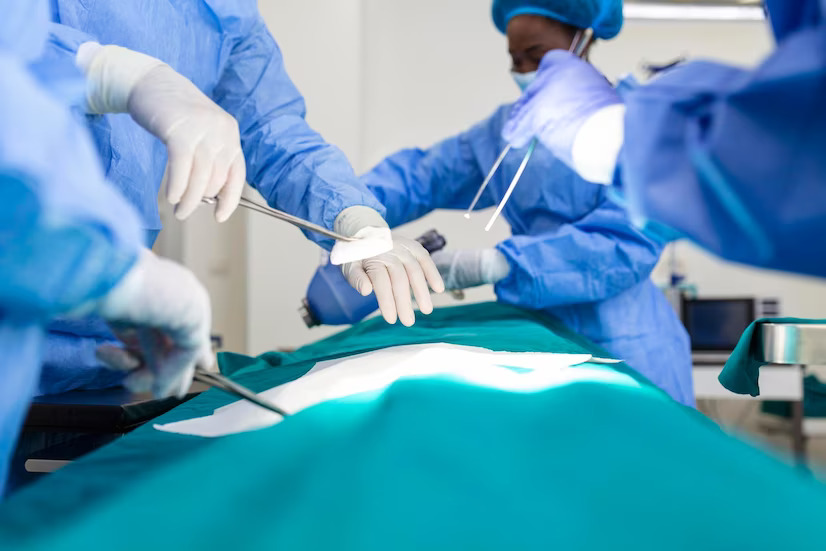
Fibroid surgery
There are several factors to consider when discussing the different types of fibroid surgery. Not only the size, location, and number of fibroids affect the type of surgery, but your wishes for future pregnancies can also be an important factor in developing a treatment plan. Some surgical options preserve the uterus and allow you to become pregnant in the future, while other options can damage or remove the uterus.
Myomectomy
Myomectomy is a procedure that allows the doctor to remove fibroids without damaging the uterus. Myomectomy procedures to remove fibroids can include the following:
- Hysteroscopy: This procedure is done by inserting a scope through the vagina and cervix and into the uterus. During the procedure, the provider uses the scope to cut the fibroids.
- Laparoscopy: In this method, a scope is used to remove the fibroids. Unlike hysteroscopy, this procedure involves making several small incisions in the abdomen.
- Laparotomy: During this procedure, an incision is made in the abdomen, and the fibroids are removed through this larger incision.
If you are not planning to become pregnant in the future, there are other surgical options that your doctor may recommend.

Endometrial ablation
Endometrial ablation is used to treat many causes of heavy bleeding. This method removes a thin layer of the inner lining of the uterus and stops the menstrual flow in many women. In some women, menstrual bleeding does not stop but decreases to normal levels or less.
Uterine artery embolization
Uterine artery embolization is a non-surgical treatment for fibroids. Uterine fibroids are non-cancerous tumors that develop in the uterus. During the procedure, the blood supply to the fibroids is cut off. This usually causes the fibroids to shrink.
If you need a test or ultrasound before starting treatment, both are done at Dr. NaIm’s office.
Sometimes new fibroids can form after treatment, especially in women with undiagnosed hormonal problems and women with a family history of fibroids. Dr. Naim talks to you about the risk factors and the possibility of returning fibroids.
Did you know?
Fibroids come in different shapes and sizes.
Fibroids may be small and described as “seedlings” or large enough to change the shape and size of the uterus. This can happen for a number of reasons, but in most cases, this change in fibroid size is related to the amount of hormones in the body. Fibroids can get bigger when hormone levels in the body are high.
Customer reviews
Fibroids can cause heavy bleeding, debilitating abdominal pain, and pelvic pressure. While the complications they cause are usually not life-threatening, fibroids can change the structure of the uterus and affect fertility.
If left untreated, fibroids can continue to grow in both size and number. As these tumors invade the uterus, the symptoms worsen. Fibroid pain increases, heavy bleeding becomes more severe and may be accompanied by severe cramping.
Fibroids are almost always benign. Rarely (less than 1 in 1,000) cancerous fibroids occur. This disease is called leiomyosarcoma.
If the size of the fibroids is more than 3 cm, the risk of complications during pregnancy increases. However, women with fibroids larger than 10 cm can have a normal delivery about 70 percent of the time.
Early evidence suggests that, in the short term, vitamin D treatment may help keep fibroids at their current size and prevent further growth.


